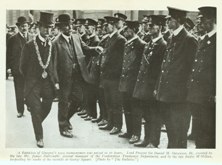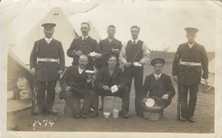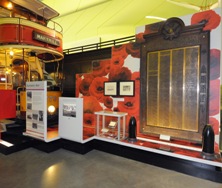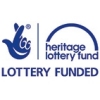Glasgow Pals Battalion
The huge scale of the First World War was a major challenge for the relatively small British Army. At the start of the war, Lord Horatio Kitchener, the Secretary of State for War, avoided introducing conscription by inviting men to volunteer with their friends, family and colleagues to join. Kitcheners New Army of volunteer battalions became popularly known as the Pals Battalion.


_HLI_final_meeting_at_Technical_College__Glasgow.jpg)
Before the start of the First World War, the British Army consisted of the regular army of full-time professional soldiers and the Territorial Force of part-time paid volunteers.
Lord Kitchener knew that the size of the army would have to dramatically increase and, on the 5 August 1914, the day after Britain entered the war, he ordered the creation of the new army of battalions made up of locally-recruited wartime volunteers to fight abroad enlisted on a short-term of three years or for the full term of war, whichever the longer.
Kitchener's New Army battalions were strictly speaking part of the regular army but are usually thought of as a distinct group. As the war dragged on enthusiasm waned. By early 1915 the flow of volunteers was dwindling. In 1916 the Military Service Act introduced conscription to Britain.
The Highland Light Infantry (HLI) in the 32nd Division mainly comprised of units of the new army created by Kitchener. In Glasgow, these volunteer battalions were also known as the 1st, 2nd and 3rd Glasgow. This was in reference to the fact that they were the three battalions of the HLI raised in Glasgow in 1914 by the Corporation of Glasgow and the Glasgow Chamber of Commerce as part of Field Marshall Kitchener's volunteer recruitment drive.
The three Glasgow Pals battalions also had nicknames for one anther reflecting which industries they were drawn from:
- The 15th were the 'Boozy First'. Their original name was the 'Glasgow Tramways Battalion' as most of their original recruits worked for the city's tram service.
- The 16th were the 'Holy Second'. Their original name was the 'Glasgow Boys' Brigade Battalion' as most of their original recruits were former members of the Boys' Brigade.
- The 17th were the 'Glasgow Commercials' or the 'Featherbeds', a nickname acquired after a storm destroyed their tents at their training camp at Gailes in Ayrshire and they were moved to comfortable billets in Troon. Their original name was the 'Glasgow Chamber of Commerce Battalion'. Most of their original recruits were students of the Royal Glasgow Technical College, former pupils of local schools (including the High School and Glasgow Academy) and white collar workers from the business houses and different trades of Glasgow and the surrounding area.
The Glasgow Tramways Battalion 15th Highland Light Infantry, courtesy of John Duncan (http://www.newbattleatwar.com/)
Images:
- The Lord Provost Sir Daniel Stevenson, inspecting 15th HLI in George Square on 14 September, 1914 . They are still wearing their green Corporation-issue tramways uniforms, prior to receiving army uniforms. Credit: ©CSG CIC Glasgow Museums and Libraries Collection: The Mitchell Library, Special Collections.
- The 15th HLI at Gailes Camp - again, still wearing their Glasgow Corporation conductors and drivers uniforms, before their official kit was issued. Credit: Courtesy of The Royal Highland Fusiliers Museum, Glasgow.
- Members of the 17th HLI hold final meeting at Technical College, Glasgow ahead of going to war. Credit: John Duncan at Newbattle at War website.
- The Glasgow Transport Museum First World War Tramway Memorial. Credit: ©Glasgow City Council Stephen Hosey












